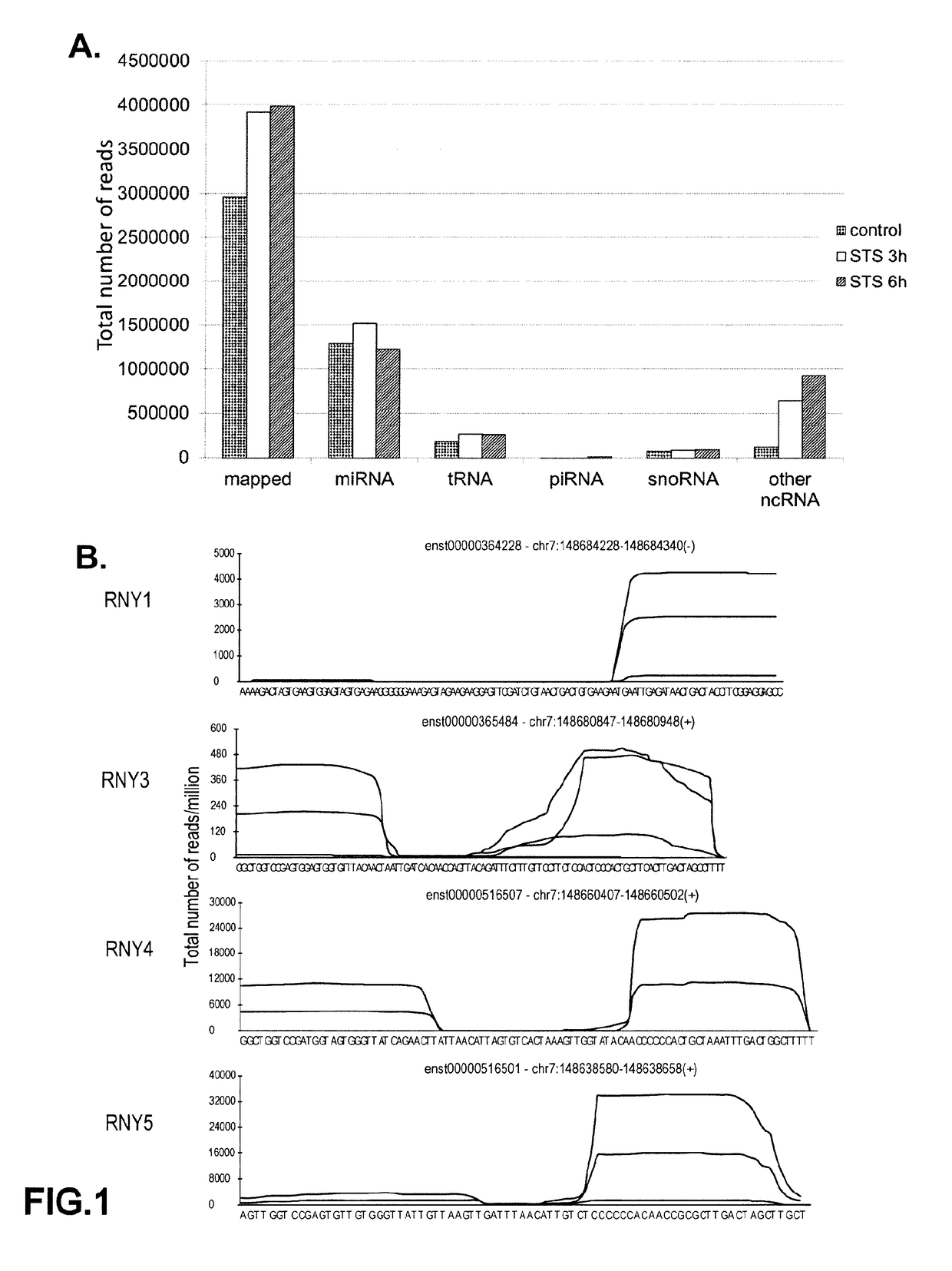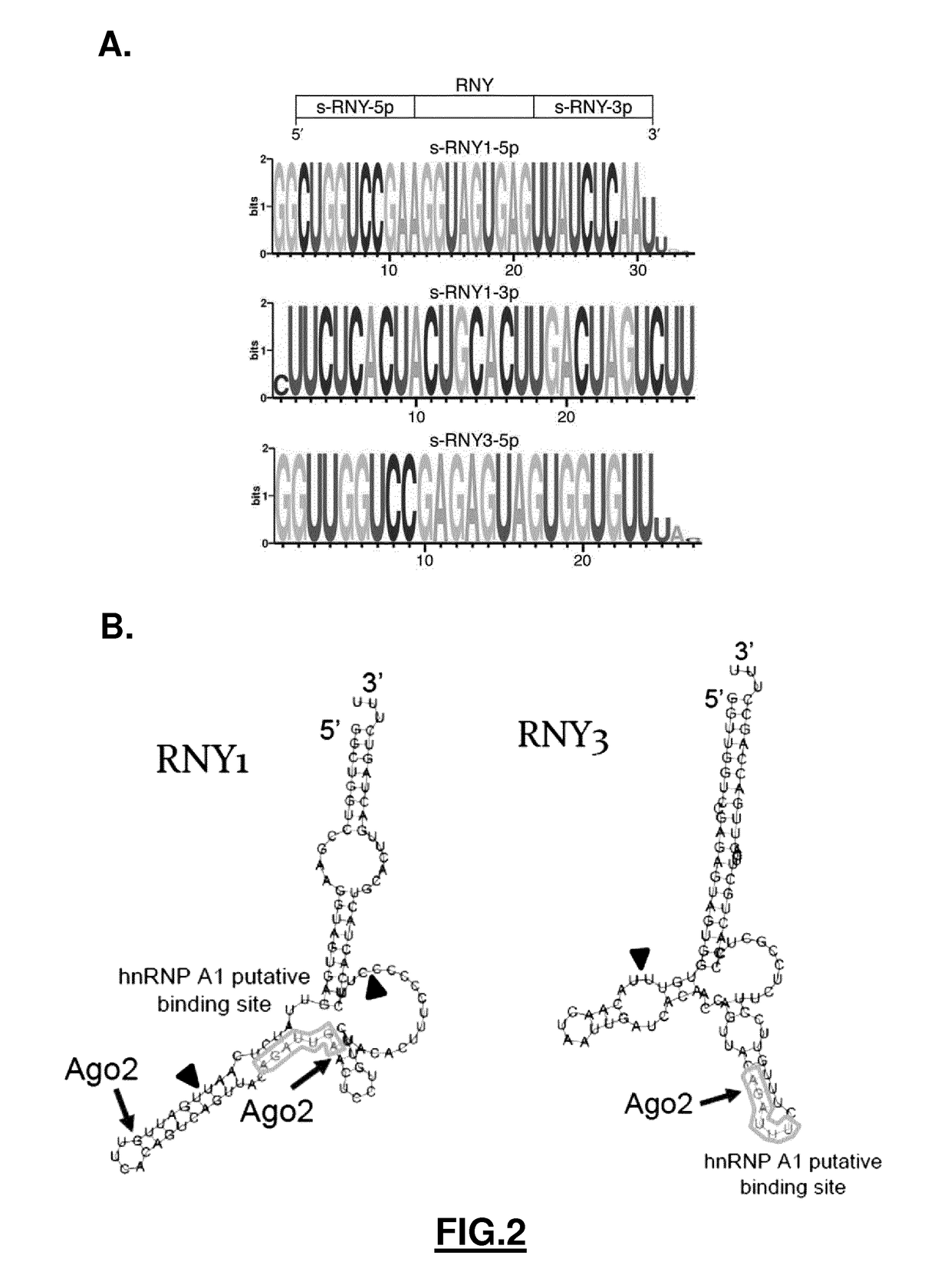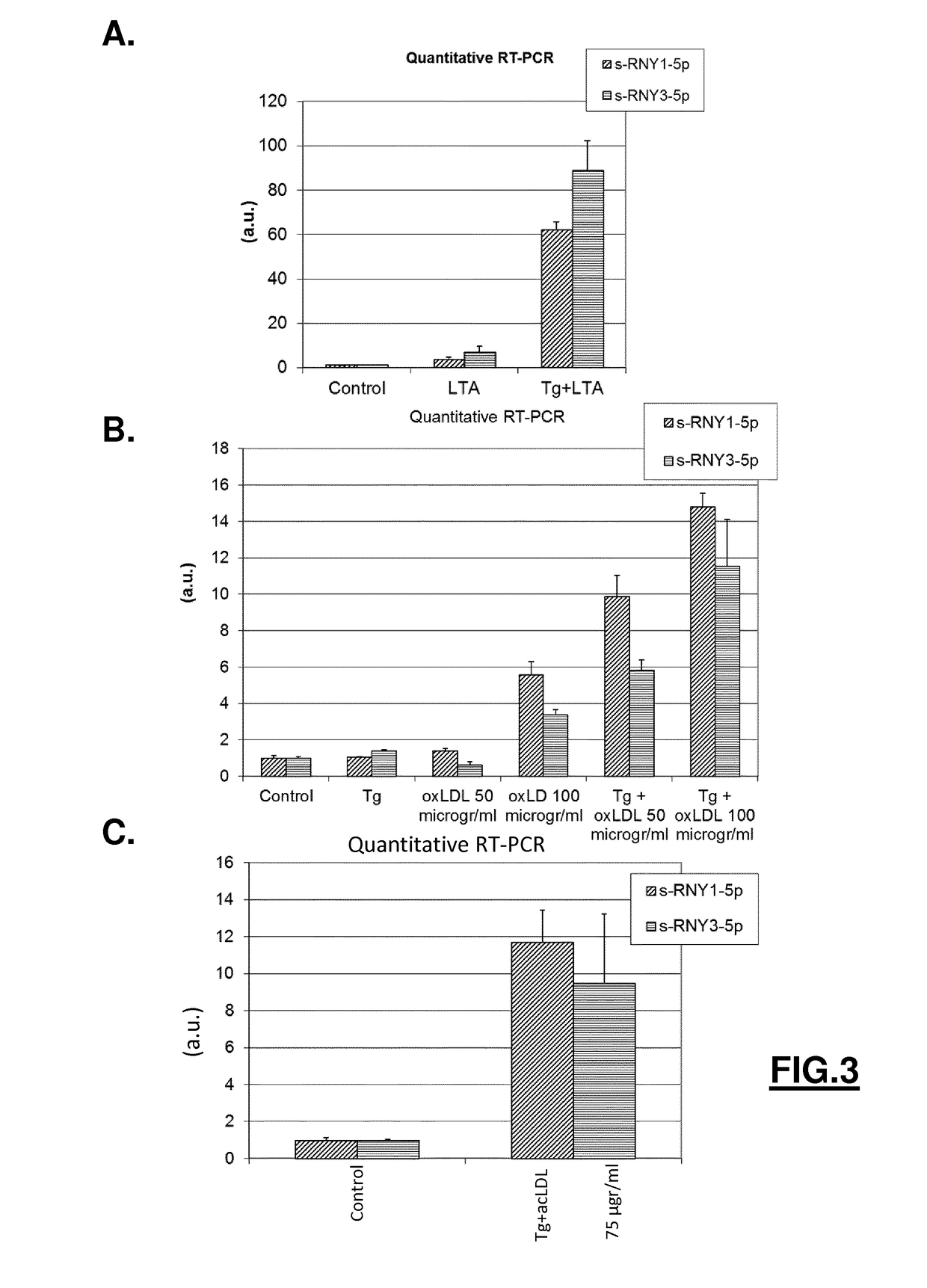RNY-derived small RNAs as biomarkers for atherosclerosis-related disorders
a biomarker and atherosclerosis technology, applied in the direction of peptide/protein ingredients, genetic material ingredients, enzymology, etc., can solve the problems of necrotic plaque formation, phagocytic apoptosis is not properly coupled with macrophage apoptosis,
- Summary
- Abstract
- Description
- Claims
- Application Information
AI Technical Summary
Benefits of technology
Problems solved by technology
Method used
Image
Examples
example 1
and Methods
[0148]Animals and Diets
[0149]Animals were kept in a pathogen-free barrier facility and maintained in accordance with Institutional Animal Care and Use Protocol of University of Nice Sophia Antipolis in accordance with appropriate national regulations concerning animal welfare. The following mice were purchased from Charles River Laboratories (L'Arbresle, France): C57BL / 6J, ApoE− / − (B6.129P2-APOE / J), and Ldlr− / − (B6.129S7-Ldlrtm1Her / J). High Cholesterol Diet (HCD) formula # TD02028 and TD96335 (Harlan Teklad) for ApoE− / − or Ldlr− / −, respectively, were purchased from ssniff Spezialdiaten GmbH (Soest, Germany). ApoE− / − and Ldlr− / − male mice at 8 weeks of age were fed with either HCD or regular diet (chow diet) for 12 or 20 weeks, respectively. Aortic arches, heart, and blood plasma were dissected.
[0150]Study Population and Data Collection
[0151]Subjects were randomly selected from a large case-control study on coronary artery disease (CAD) referenced as GENES study (Genetique...
example 2
otic and Atherogenic Stimuli Induce the Expression of RNY-Derived Small RNAs in Macrophages
[0196]A high-throughput small RNAs sequencing has been performed in primary macrophages stimulated with either staurosporine (STS) or withdrawal of Macrophage-Colony Stimulating Factor (M-CSF) treatment. By mapping the sequencing data to small RNAs databases, including miRNAs, piRNAs, snoRNAs, riRNAs, and tRNAs using the Novoalign program (FIG. 1A), it was shown that apoptotic macrophages highly expressed RNY-derived small RNAs (FIG. 1B). 3 RNY-derived small RNAs were found in mouse and 6 in human varying in length from ˜24 to ˜34 nt which map to the end and stem regions of the RNYs (FIGS. 1B, 2A and 2B). These small RNAs will be referred hereinafter as s-RNYs, with the mouse s-RNY1-5p being previously classified as piRNA (piRNABank, http: / / pirnabank.ibab.ac.in / ) and the human s-RNY5-3p as miRNA (Meiri, E., et al. (2010) Nucleic acids research 38, 6234-6246; Schotte, D. (2009) Leukemia 23, 313...
example 3
hnRNP A1-Dependent Processing of RNYs in Lipid-Laden Macrophages
[0199]Consistent with the observation that the induction of s-RNY expression (by M-CSF withdrawal or addition of oxLDL in combination with Tg, or PA in BMDM; or addition of STS on cultured human primary macrophages) is always accompanied by a reduction of RNY (Nothern blot analyses performed for s-RNY1-3p / RNY1, s-RNY1-5p / RNY1, s-RNY3-5p / RNY3, and s-RNY4-5p / RNY4; data not shown), a processing upregulation of RNYs has been found in vitro using total cell extracts from PA treated-BMDMs compared to unstimulated control (analyses performed for RNY1 / s-RNY1-3p and s-RNY1-5p, and RNY3 / s-RNY3-5p; data not shown), overall suggesting that s-RNY expression is modulated at the post-transcriptional level. Because RNYs form a hairpin secondary structure rather similar to that of miRNA precursors (FIG. 2B), an involvement of small RNA processing machinery components in s-RNY maturation has been hypothesized. To validate this hypothesis...
PUM
| Property | Measurement | Unit |
|---|---|---|
| temperature | aaaaa | aaaaa |
| length | aaaaa | aaaaa |
| density | aaaaa | aaaaa |
Abstract
Description
Claims
Application Information
 Login to View More
Login to View More - R&D
- Intellectual Property
- Life Sciences
- Materials
- Tech Scout
- Unparalleled Data Quality
- Higher Quality Content
- 60% Fewer Hallucinations
Browse by: Latest US Patents, China's latest patents, Technical Efficacy Thesaurus, Application Domain, Technology Topic, Popular Technical Reports.
© 2025 PatSnap. All rights reserved.Legal|Privacy policy|Modern Slavery Act Transparency Statement|Sitemap|About US| Contact US: help@patsnap.com



